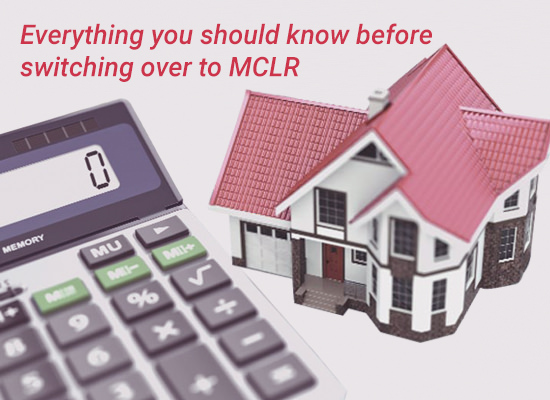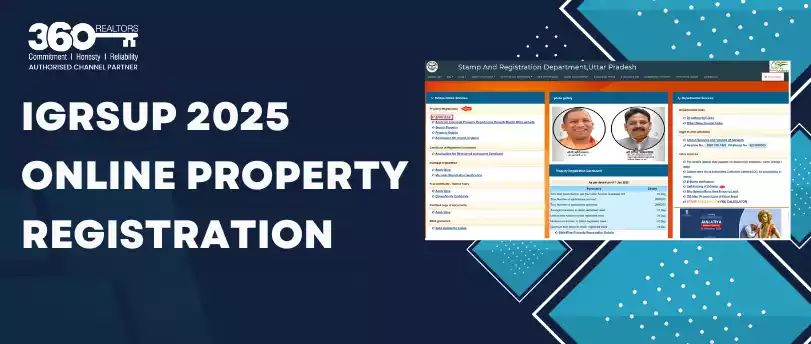This financial year gave some good news to all the borrowers. The Reserve Bank of India, on 5th April 2016, announced a reduction in the repo rate by 25 basis points and introduced a new methodology known as Marginal Cost of funds-based Lending Rate (MCLR) for the computation of benchmark lending rates. The all new MCLR rates came into effect from April 1st onwards and will be applicable for all the new loans. All those who are already running home loans availed after July 2010 but before April 1 2016, will continue with the lending bank’s base rate. And for most of them, the interest rate is upwards of 10%. Though the MCLR is applicable to all the new loans, by default, the existing loan holders can switch over from base rate to MCLR but it comes at a cost in the form of a conversion fee. They can decide to move to this new benchmark rate and have the freedom to select a lender who would meet all their requirements.
For those who are existing home loan borrowers, expecting a reduction in the interest rates in tune with the reduction in the repo rate cut is something that would not be granted.
With the implementation of MCLR, the banks are anticipated to respond quickly to all types of policy rate revisions that shall be announced by the RBI. And in the current scenario of falling interest rate, the immediate impact of the same shall be a reduction of rates.
What is MCLR?
Post the RBI repo rate cuts, the banks were reluctant to make a cut on their lending rates under the base rate regime, or even if they did so, they did with a time lag. Thus a new method of bank lending known as marginal cost of funds based lending rate (MCLR) is introduced which shall be applicable for all loans granted after 1st April 2016, including home loans.
Till 31st March 2016, the banks used base rate lending as the benchmark rate but now MCLR shall be the benchmark for new borrowers. MCLR is connected to actual deposit rates and thus the banks will have to issue minimum 5 MCLR rates. They also have the discretion to set MCLR for longer duration say 2 or 3 years.
The existing loan borrowers have the option to either get their loans switched to MCLR with the same lending company or to get them transferred or refinanced from other lending institutions. They can also choose to continue the loan at the same base rate regime especially if the loan is nearing maturity. Banks in such case will automatically reduce the tenure and transfer the benefits of lower interest to the customers.
However, the RBI allows the base rate borrowers to switch to MCLR on mutually agreed terms and conditions. It also clarifies that the existing loans can even run on the same rate till maturity but in case of switch over the borrower need not pay any charges nor shall the loan be treated as a foreclosure.
Switching from base rate to MCLR within the same bank
In case there is a considerable difference in the amount what you are paying to the bank now and the amount offered at MCLR, it is better to shift. In cases where the loan still has a long tenure to serve, switching is a wise decision. Switching to MCLR can lower the interest rates notable if already running a loan at BPLR or base rate. So request your banker to calculate and tell you the amount that can be saved by switching over to MCLR. For example, an existing loan say running at a base rate of 10.75% with an outstanding amount of Rs 20 lakhs if switched over to MCLR at say 9.5%( the current trend), can save around 2.5 lakhs to be as paid as interest.
Switching loan with another bank (refinancing)
If the home loan interest rate offered by your bank is already high, then you can even go for refinancing. Decide accordingly and look for suitable options to get your loan refinanced from some other bank that offers an interest rate of something around 9.5%. Calculate all the associated charges like legal charges, transfer fees, expenses, etc. and then take a call. Other charges levied may include mortgage charges, lawyer’s fees, etc. You can even get the processing fee waived off during the festive seasons and there won’t be any foreclosure or full repayment charges applicable.
Remember, buying a home loan insurance cover plan offered by the bank is not mandatory. Rather get the loan insured via a pure term insurance.
MCLR is more dynamic
Since MCLR is based on the marginal cost of funds that includes the cost of borrowings or repo rate, interest at which the banks issues deposits, and returns on net worth, it is considered to be more dynamic. And, every time there is a change in the repo rate, MCLR will also change accordingly which is not the case with base rate. In case of base rate lending, it is not accounted for repo rate change and also the banks are very slow in passing on the benefits to the customers and this is the main reason, why borrowers prefer switching over.
Risks involved
Under the MCLR-linked contracts, the banks review and declare the rates several times and also reset the same annually for the home loan borrowers. In case of falling interest rate scenario, if the bank agrees, quarterly or half-yearly is a better option. But if the interest rate cycle turns, it will not be beneficial for the borrowers.
Also, there is always an uncertainty of an upward movement before reaching the reset period as if RBI increases the repo rate, MCLR too will increase.
Thus apart from making a switch over from base rate lending to all the new MCLR methodology, and save interest, the borrowers should calculate and prepare a partial payment plan in order to further reduce the interest obligation.






